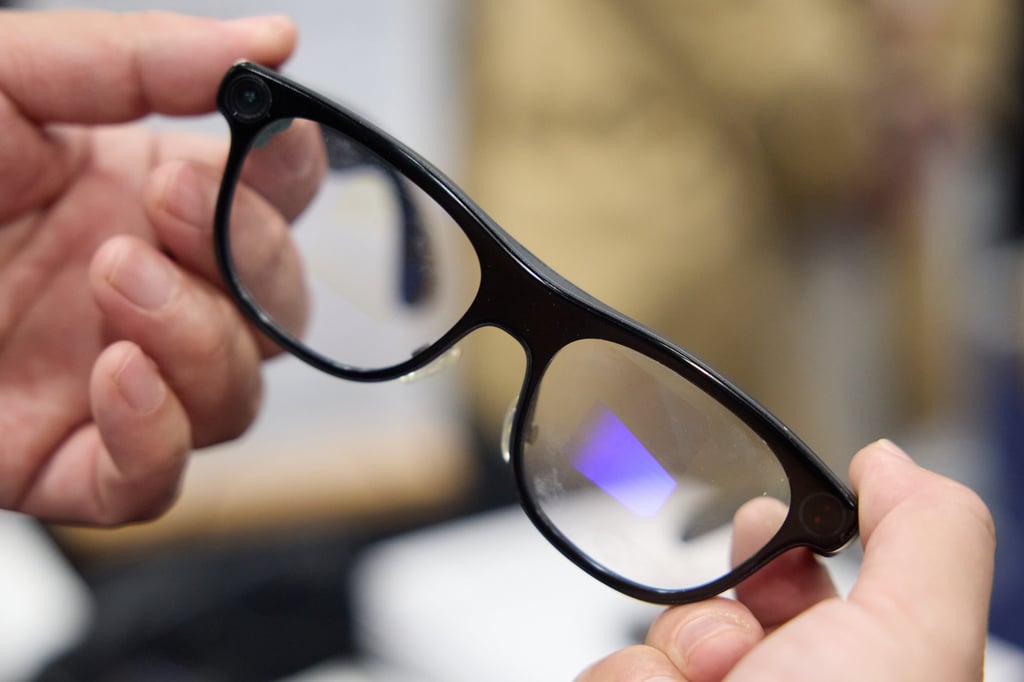The producers of connected eyewear are multiplying their innovations with more discreet models in an attempt to differentiate themselves in a competitive, fast-growing market.
Live translation, GPS, cameras—smart glasses are quickly adopting new functionalities. As Techsponential analyst Avi Greengart mentioned at the Consumer Electronics Show (CES) in Las Vegas, “There are so many of these smart wearables, and more of them are going on your face.” Numerous smart glasses manufacturers showcased their latest innovations at the event.

Evolution of Smart Glasses
The industry has come a long way from its early days. Gone are the bulky Google Glass protrusions and the cables of Epson’s Moverio from the early 2010s. Today’s smart glasses are paired with smartphone apps and resemble traditional eyewear. Ray-Ban Meta, developed in collaboration with Mark Zuckerberg’s social media company, is currently leading the market with this sleek approach.
>>>HB2770C7ECW Replacement Battery for Huawei MatePad Paper
Technological Advances Driving Growth
According to market research provider MarketsandMarkets, the sector’s growth is driven by advancements in augmented reality, artificial intelligence, and miniaturization technologies, pushing the limits of what these wearable devices can achieve.
However, integrating technology into stylish frames requires careful trade-offs. For example, while the Ray-Ban Meta can capture photos, play music, and offer object information, it lacks augmented reality with superimposed images. Meta’s Robin Dyer mentioned that AR capabilities may come later, but would likely double the price.
Pricing and Competition
Pricing has become a crucial battleground, especially with the influx of Chinese manufacturers. While Google Glass retailed for around $1,500 in 2013, today’s smart glasses are approaching the price of premium regular eyewear. Meta’s collaboration with Ray-Ban starts at just $300, $50 more than standard Ray-Bans, offering a “cool camera” as a bonus.
Chinese start-up Vue has even pushed prices lower, offering basic models with voice assistant and music capabilities for $200.
Augmented Reality Focus
Some manufacturers like XReal are focusing on augmented reality, projecting smartphone, computer, or gaming console displays. Although Apple’s VisionPro failed to stir excitement last year, advancements in AR are helping to move away from the bulk of traditional virtual reality headsets toward sleek, more wearable designs.
Meta has plans to launch its pared-down version, the Orion, still in its testing phase but expected to be marketed in 2027 at the earliest.
>>> CT4X-BTSC Replacement Battery for Honeywell CT45 CT47
Minimalist AR Glasses
Companies like Even Realities and Halliday are focusing on ultra-thin frames that look like standard glasses but offer basic AR capabilities. Carter Hou, Halliday’s second-in-command, emphasized, “If we want to make a good pair of smart glasses, we must first make a pair of cool glasses.”
Halliday’s $489 model, launching in March, will display text in the upper corner of the wearer’s vision. It uses AI to suggest responses during conversations, offer real-time translations, and function as a discrete teleprompter.
Even Realities has adopted a minimalist approach as well. Tom Ouyang from Even Realities explained, “We got rid of the speaker, we got rid of the camera. Glasses are for the eyes, not the ears.”